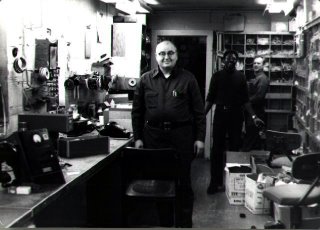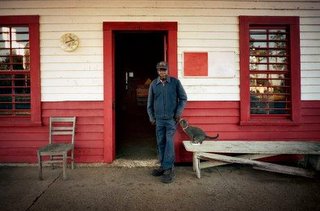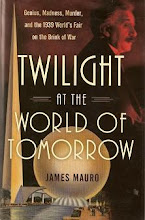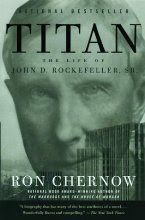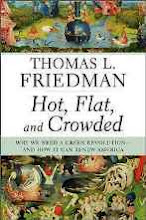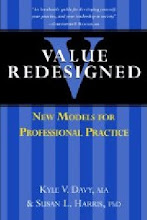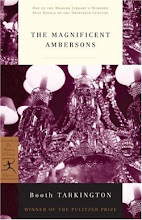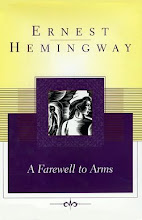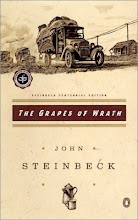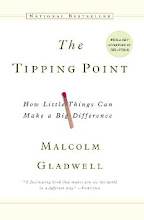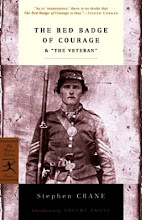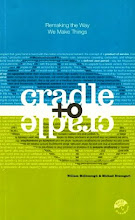
Innocence is never as pure as through the eyes of a child. It is always a rare opportunity to share in the unfettered pure emotions with a child. As adults we have been conditioned to channel and control, temper and blunt, constrain and dampen our emotions. It’s considered a sign of immaturity to be overly expressive and gleeful. Society binds us by rules, etiquette, tradition, mores, civility, courtesy, customs, propriety, and social graces. Slowly we develop ways to limit and curtail our emotions. We become disconnected to the full enjoyment of emotion in our constant state of suppression. As an adult, it is difficult to experience the simple joys of life, unless you look through the eyes of a child.
Somehow my life has passed without children. Nature provides balance in all things and by some strange circumstance I have been blessed with grandchildren. Remaining close to a former daughter-in-law long after a divorce from the family, her next marriage produced three sons that are now in every sense of the word my grandchildren. Like a jigsaw puzzle, life fits together seemly unconnected pieces and creates a rich, beautiful tapestry of hidden meaning.
Yesterday stripped away every constraint of decorum as I spent the day as a child with the eldest son Brennen, who is nine years old. We did something together that is one of my most cherished memories with my father as a child. This was Brennen’s first professional sporting event. We went to Arrowhead Stadium and watched the Chiefs play the Chargers on Christmas Eve. To Brennen this was the equivalent of………..well there was no equivalent. For days he would break into a beaming grin and fidget with uncontrolled excitement whenever we talked about attending the game. The days leading up to the game slowly crawled by with anticipation building to a fevered pitch as we prepared to leave for the stadium.
No one could have chosen a more miserable day to watch a football game. It was a grey cold windy day with driving rain and temperatures hovering near 32 degrees. As we arrived at the stadium parking lot, I was worried if Brennen was prepared for such a brutal climatic experience. I considered the widescreen television in front of the roaring fireplace at the house, but dismissed the retreat as I glanced over at Brennen, who was smiling oblivious to the pounding rain on the windshield. The recklessness of my long lost child began to emerge. “We’re men! Nothing is going to stop us from cheering for our heroes. Football is a tough sport and our team needs fans that are equally tough.” With a temporary loss of sanity we parked the car and left the cozy confines of our warm chariot. The march to the coliseum began.
Arriving two hours before kick-off in order to partake in some ritual tailgating, I was given some vague instructions on where to find the tailgate party. I was given a phone number to call in case we had a problem finding the temporary shelter from the cold. As we emerged from the car I considered us well prepared to endure the dismal conditions of the day. The two of us looked like giant puffballs with the countless layers of clothing, sweaters, gloves, hats, thermal underwear, ponchos and jackets. Our puffball appearance was exaggerated by the bright yellow ponchos we selected to show team spirit. My carefully crafted plan for survival has one fundamental flaw. As I walked across the parking lot, the driving rain hit the poncho and cascaded down the front of me only to land on the top of my sneakers. A combination of the half inch of water on the parking lot surface and torrents of water sheeting from my poncho completely soaked my feet within the first fifty feet of our journey. I looked down at Brennen’s sneakers and he wasn’t fairing any better than me.
The long walk from the car to the tailgating area severely tested my will. My feet were already cold and wet. The wind was whipping our ponchos up over our heads allowing driving cold rain to pelt our undergarments. The cold wind was knifing through my clothing making me shiver. I quietly wondered if this test of manhood was a good idea. Brennen and I proceeded to attempt to locate the tailgating party without success. I called the cell phone but no one answered. All the visible tailgaters were hunkered down hiding from the rain and wind. Some were sitting in the trunk of their cars with plastic sheeting covering them. Others were huddled between cars staring at a few burning embers of charcoal. It reminded me of some refugee camp high in the mountains. There was no cheering and celebration. This did not seem like the place of joy associated with every other tailgate experience. Everybody was so completely bundled with clothing that recognizing a face was impossible.
We turned the final corner of tailgater section moving toward the stadium and stumbled across a huge man of three hundred or more pounds standing under a summer awning like it was a sweltering summer day. His face was painted red and a long wet chief’s flag was hung from his shoulders like a superhero cape. He stood erect without hat, gloves or shirt. To his bare torso was welded a massive belly that was painted and decorated with chief logos. Across his chest and down his side like graffiti was penned “Belly Boy”. Brennen was the first to notice this aberration in the cold. Brennen pulled at my arm and pointed, not knowing what to think. I looked up, smiled and said that’s “Belly Boy” one of the chief’s most fanatical and devoted fans. He shows up for every home game and can usually be seen on television jumping up and down screaming for the viewing audience. For a moment I thought someone needs to tell this guy that it is 32 degrees and his medications just aren’t working. We were on a mission of survival; I had little time to save others. As we passed Belly Boy, he looked at Brennen smiling like some ancient warrior and bellowed the war cry “Chiefs!!!” It must have reminded Brennen of the old legendary highlander warriors of “braveheart”.
Failure to locate the tailgate party drove us into the stadium seeking shelter long before kick-off. It was upon entering the shelter of the stadium Brennen came to life. We walk down the concrete ramp to the field level concourse. Rounding the concourse, only small tantalizing glimpse of the stadium field would be revealed. I decided it was time to give Brennen a full view of the game field. We ducted into an aisle leading down to the field level seating. As the narrow corridor gave way to the stadium bowl the field emerged into full view. Brennen gasped at the sight. He eyes were the size of pie pans. We had entered at a place as glorious as heaven. The pure green hue of the field was brilliantly contrasted the cold gray colorless sky. The field glowed under the lights. I vividly recalled a similar memory deeply burned in my mind as I walked out from behind my father to see the expanse of Shea Stadium and Joe Namath tossing balls to Emerson Boozer during the pre-game activities so many, many years ago.
I asked Brennen if he wanted to take a peek at our seats before the game started. He was speechless trying to comprehend the sacred ground we were walking on. We walked down the aisle out from under the sheltering upper deck into the driving rain. With each step we took Brennen’s smile grew larger and larger. We past rows 36 and 32. We past rows 27 and 21. The field grew closer and closer. We past rows 16 and 10. Approaching the railing that prevents someone from walking down onto the field, I turned and pointed to seats 4 and 5 in row 8. Brennen could contain himself, like he had grabbed onto an electric cable he jumped up and down, squealing with excitement. “Are these really our seats? I can almost touch the field!” I looked at him and said “This is the most important game of the season. This is for the chance for the Chiefs to go to the playoffs and I thought the chiefs needed their biggest fan sitting close to help them win the game.” He smiled and looked over the field with a new sense of responsibility. I asked “Do you think you can help them today?” He bellowed “Oh Yeah”.
Standing in a near empty stadium, Brennen became pensive and said “The field looks so small.” I could not contain my smile understanding what had just happened. The world had just got a lot smaller and his life was forever changed. Things of importance and reverence grow out of proportion in the mind of a child. The gridiron where heroes battle in mortal supremacy in a child’s mind is the size of twenty football fields. This small field could not contain all the visions of greatness. Jokingly I said “I bet if some of those 300 pound linebackers were chasing you that field would seem a lot bigger.” He nodded in agreement. We shared a moment of magic standing silently staring out of over the field. The curtain of rain falling from the sky, the cold swirling wind, the soaking wet feet faded into the background. It was no longer cold. We were two kids enjoying a new playground while ignoring the elements.
We retreated to the shelter of the concourse to indulge in our first ball park hotdog together. As we stood in line we debated the merits of the brat verse the hotdog. At the front of the line our decision was clear; one brat with mustard and sauerkraut, one hotdog with ketchup and two hot chocolates. Pushing our way through the crowd that was beginning to swell we unwrapped our dogs at the condiment counter. The king’s ransom we plunked down on the counter secured us the common ballpark fare. The brat was overcooked and wrinkled with long black char marks where it had been burned by the grill. The bun was compressed and glued like gum around the outside of the brat. I had to peel and pull the bun back from the brat in order to have a place to apply mustard.
Huddled against an open area of wall in the concourse we devoured the meal like hungry animals that had not eaten in months. Brennen was dancing and twirling, moving in uncontrolled rapture as he savored every bite of the hotdog. I noticed his fingers were covered in ketchup as I handed him a napkin. In absolute disbelief he looked at me a said “That was the best hotdog I have ever eaten in my life.” I accepted the statement as truth assuming that he had eaten his fair share of hotdogs. I thought about it for a second and replied “Yeah, that was a pretty darn good brat” and grabbed another napkin to remove the mustard from my fingers. Taking a sip of the hot chocolate I considered the fact that food enjoyment is deeply connected to the experience. In any other circumstance I would have rejected the hotdog purely on visual evident and asked to speak to the chef. This day was different; this was quite possibly the finest food we could ever imagine.
It was time to head back to our seats and watch the pre-game activities. Walking from the dark and damp concourse we emerged as the grounds crew began removing tarp from the field. Never having seen this before on television, Brennen asked what they were doing. We spent some time discussing field maintenance and the NFL rule that required a tarp if it was forecast to rain 24 hours before a game. Standing in the pouring rain Brennen agreed today would qualify for the NFL rule. I asked him if he was sure. He just smiled.
As the last section of the tarp was rolled up exposing the grass surface, players began to venture out from the locker room to stretch and warm up. We looked around; the stadium was slowly beginning to fill. The first players to warm up were the kickers and punters. We watched the Chief’s punter drive the ball 45 yards a few times. Brennen looked at me and said “My dad can kick the ball farther than that. He can kick it from three houses away.” The greatness of a father can never be diminished in the eyes of his son. I leaned over and replied “Well maybe if we see Coach Vermeil we might mention that to him. I’ve heard he is always looking for a good punter.”
The Charger’s kicker began to practice 50 yards field goals near us. The swelling crowd began reacting to the kicker. Each missed field goal was greeted with a round of heckling. As the heckling grew louder Brennen’s face exhibited confusion, not quite sure if this was proper behavior. I tapped him on the shoulder and said “You know we came here to help the Chiefs.” As the kicker missed the next field goal, I cupped my hands around my mouth a yelled “Yeah that’s what we need during the game!” Brennen broke into laughter and stamped his feet in glee. I looked over at him and said “I’m not sure I can do this all by myself.” The next kick was good at which Brennen let out a heady “Booooo”. It was my time to laugh. We spent the next fifteen minutes cheering and booing each field goal attempt.
The level of activity on the field was building. Both teams were out on the field running drills. The Chargers offensive line began blocking drills in the end zone near us. I suggested we move down to the railing to get a better view. Nervously Brennen followed me down the eight rows until we were only about fifteen feet from the players. The linemen huddled in a group were massive with arms and legs the size of tree trunks. The sounds of snorting and grunting reminded me of mystical gigantic gladiators as they pushed and wrestled each other. I glanced at Brennen’s face and he appeared horrified at the size and strength of the warriors before him. It was the same wide eyed blank expression as when you open a door and find a naked person behind it.
A large grey haired gruff offensive line coach was barking at the linemen and any of the fans than looked at him wrong. He was the type of person you would expect to find guarding a dungeon door. He made it a point to walk near where we were standing and screamed at the groundskeeper that he needed to remove the standing water from the sideline. The groundskeeper yelled back and flipped him off. He turned a let out an evil bellowing laugh as he walked away. The tension was building. It became more and more apparent that this was going to be a clash of titans, a clash of good and evil. All of this was occurring under a cold miserable downpour.
As the minutes counted down the field continued to fill with television crews, sound crews, sideline announcers and broadcasters. Then the sideline crews, ball boys and referees drifted onto the field. Each team brought out the trainers, the medical staff, the coaches and the front office. It was like two large armies were assembling for battle. Still the field continued to fill. The color guard, sports photographers, band members, flag twirlers, mascots and security guards filed in from every opening in the field wall. The stadium behind us began to come to life as we heard a low distinctive roar start to emerge from the upper decks. Mesmerized by the intensity of activity Brennen and I scanned the stadium only to find it was filling to capacity with a sea of red.
One of the last activities is the cheerleaders entering the field. Dressed tight red pants and white hooded ski jackets, they slowly worked the crowd adjacent to the stadium wall. They walked up to the fans smiling as they introduced themselves. I looked at Brennen and said “Dude, this is your chance to say something and I’ll get a photo of you and a dozen cheerleaders.” He looked at me like I just asked him to shoot the president and shook his head no. “You’re going to regret this if you don’t go get their attention.” The answer was the same an emphatic no. I thought to myself that I should have taught him how to use my camera before we came. You never know when you might need of photo of yourself with twelve cheerleaders. I guess there is only so much a nine year old can endure before being overwhelmed. I decided not to press the issue as the rain continued to fall from the sky.
Without warning the giant video scoreboard came to life announcing the epic battle than was about to begin. Just like the players, the fans were warming up. The huge video scoreboard was coaching the crowd. Like a well rehearsed play the fans would roar at the urging of a fabled past warrior who’s face was displayed on the scoreboard looking down over the field. I let Brennen know that it was part of our job to roar with the crowd. As the frenzy built the scoreboard would flash “The Loudest Stadium in the NFL” over and over. Time was winding down as the two teams left the field for the final coaching instructions in the locker rooms.
Santa appeared on the screen extolling the fact that he always wears Chief’s red. This drove the Christmas Eve crowd into a fevered pitch. Then all of a sudden the final piece of the puzzle was set into place. As if by magic Belly Boy walks down our aisle and sits three rows in front of us. Just like in the movies where the contest could not begin until the king was seated. On this cold rainy day, Belly Boy was about as close to Chief’s royalty as we were going to get. Belly Boy was still without the comforts of clothing from the waist up as he stood with the rain pelting his screaming face. Brennen danced in circles knowing Belly Boy was in our section helping us cheer. Brennen must have caught Belly Boy’s eye as he was walking down the aisle, because he turned, faced us and posed like a superhero. In fine Celtic warrior tradition Brennen knew exactly what to do. He cupped his hands to his mouth and bellowed as louder as he could the ancient cry of “Chiefs”. Belly Boy curled his lip in a snarl and bellowed back “YEEAAHH”. A wave of fatherhood swept over me as I took pride in the fact I taught Brennen how to scream at a half naked fat man with a red painted face who was standing in the driving rain. I made a mental note that on the way home I should discuss with Brennen that his newly acquired skill of screaming at menacing madmen is best reserved for sporting events.
The video screen began showing glorious heroes from the past. Marcus Allen doves over the goal line while the crowd cheered. Len Dawson tosses a touchdown then held up a super bowl trophy the crowd cheered again. In a muddy uniform, Buck Buchanan drilled some helpless quarterback and the crowd roared the loudest. The crowd was ready, the practice session was over. The “twelfth” man was suited up with his game face on when out of the tunnel raced a wave of blue and gold. The Chargers team thundered across the field like a herd of buffalo. The crowd immediately erupted with a deafening roar of disappointment. Brennen clapped his hands over his ears as the essence of evil took control of the field. The Chargers ran to the sidelines, huddled around their general and began to chant occasionally turning to sneer and flex their muscles at the roaring crowd. At the center of the huddle was Coach Schottenheimer who spent ten years as the beloved head coach of the Chiefs, but had now gone to the dark side. Once was light, is now darkness. The stage was set. Evil now occupied holy ground.
Cheerleaders danced into two long lines at the center of the field acting like damsels in distress waiting to be rescued by the local heroes. As the crowd began stomping their feet, the stadium began to quake and shudder. The most deafening roar yet filled the air as our heroes took the field. For a brief second I thought Brennen was going to faint, but he recovered quickly scanning the mass of players for his favorite leaders. “There’s Trent Green!!!” he squealed. One by one the important players were identified with delight. “Tony Gonzalez!!! Tony came to my school and his handprint was so big that it didn’t fit on a piece of paper.” All heroes are larger than life. Good took its place across from evil as the two teams wearily eyed each other amidst the roar and the rain. Brennen was so caught up in the moment that his arms and legs began running themselves as they flailed uncontrolled. He was to busy to be concerned that he looked like a chicken that had just lost its head. Brennen’s enthusiasm was contagious, I developed a case of the “jimmie” legs as I began to twist and squirm uncontrollably.
On cue the video screen went silent. The players parted once again revealing the green field again as a military color guard marched toward the center. A picture of a former coach flashed on the giant screen as the loudspeakers announced a tragedy is his family and requested for a moment of silence. As if a switch was turned off the stadium was went absolutely silent. I craned my ears to hear a murmur of even the smallest sound, but there was none. Even the rain respected the request and did not make a sound. The announcer waited a few seconds and thanked the crowd as the color guard prepared for the national anthem.
A well known local soul singer stepped from behind the home team crowd and began singing. Her beautiful voice echoed from the stadium walls as the crowd hummed softly in the background. As she sang “rockets red glare, bombs bursting air”, fireworks erupted from the field filling the sky with brilliant colors and thick white smoke. The sudden explosions startled Brennen, smiling he must have thought all this and the Fourth of July too. The singing of the national anthem always concludes with a stadium tradition which you never get to hear on television any more. Broadcasting the national anthem is just one more unfortunate victim of the insidious creep to continuous commercials without any program content. As the singer finished the last line “the land of the free and the home of the…..” The crowd roared “CHIEFS!!” Brennen laughed not knowing what to think. The stadium again began to rock and quake as the roar steadily grew again.
The team captions strode out to the middle of the field for the coin toss. The smoke from the fireworks blanketed the field in a misty fog. It was as if we were transported to the highlands of Scotland. The Chiefs won the toss and Chargers chose to defend the goal line closest to us. Let the battle begin.
It was immediately apparent from the first play that the field was going to be a major factor because of the heavy rain. Clumps of sod exploded into the air while players skated and fell. The green grass of the pre-game quickly gave way to a sea of mud. It was also apparent that this was going to be a classic game to remember. It was deep in December and both teams desperately needed a win to keep any hope of the playoffs alive. The hitting was ferocious with bodies flying through the air like rag dolls. It was a human demolition derby between super human athletes who trained their entire life for this single moment in time. This is what people come to see. This is how the game was meant to be played, in the cold, in the rain, in the mud with reckless abandon to personal harm. There is no tomorrow if your team loses, there is only next year. This is the time that legends are born. Between the two teams we were watching eleven pro bowlers and quite possibly eight to ten future hall of fame inductees display their talents. There is nothing simpler for a child to understand than the mortal struggle of good and evil, heroes and villains, winning and losing.
For a moment, I imagined Brennen bringing his eldest son to his first Chief’s game and pointing to the ring of honor high on the stadium’s upper deck. “I remember watching Tony Gonzalez, Willie Roaf and Will Shields play for a playoff spot one brutally cold December day.” I imagined the same awe as when I point to Joe Namath’s number in another sacred arena in a land far away. “Did you really see Joe Namath play?” We are bound by folk lore. Ours is an oral tradition handed down from one fan to another.
The game continued as the two team bludgeoned each other in a test of wills. Brennen was catching on fast as he had learned the tomahawk chop, the dreaded D-FENCE and all the proper cheers for each Chief Player. He was dutifully helping the team on to victory. The Chiefs ground game began to gain traction amidst to piles of turf and mud. They started driving down the field towards us. This drive was all about running back Larry Johnson. Trent Green tossed a little swing pass to Larry to the right for 5 yards. Then the massive offensive line blasted a hole in the Chargers defense and Larry rushed up the middle for 21 yards. The team continued marching toward us. Johnson rushed up the middle for 2 yards and Trent threw an incomplete pass to the right. Then in clear view of the adoring crowd from the fifteen yard line Tony Gonzalez when into motion, turned up field and leveled the outside linebacker with a crushing block allowing Larry to rush into the Chargers open back field an 11 yard gain. The roar was deafening while the sky opened up and drenched the field.
Taking advantage of the situation I leaned over to Brennen and said “Theses are a bunch of soft sunny California football players. They can’t take the weather. They are going to melt like little sugar cookies.” Brennen slapped his knees in glee and yelled at the players in end zone “You’re going to melt! You’re going to melt!” The Chiefs broke the huddle and lined up in front of us at the four yard line. Every one in the stadium including the Chargers knew exactly what was about to take place. The roar of the crowd simmered down as to not disrupt the offence. The ball was snapped and both ten times pro bowlers Willie Roaf and Will Shields took a step back headed to the left side like wreaking balls looking for something to destroy. For years the Chiefs have devastated opponents’ defenses with number 77 and 68 plowing gapping holes in their right side. Today would be no different. As the combined 640 pounds hit the goal line the sounds of helmets cracking, grunts, groans and pads exploding rose above the roar of the crowd. Like two freight trains running into a group of speeding semi-tractor trailers the display was awesome. Like staring at a car wreck knowing it was going to be ugly but unable to avert your eyes, we stared in horror. The Chargers line yielded as Trent handed the ball to number 27. Larry appeared upset that he was late to the party and leaned his body forward exposing his shoulder to the crumbling Chargers right side. There was another explosion as bodies spun in the air.
As the referee’s hands were raised over his head signaling touchdown pandemonium erupted. Brennen and I slapped each other and howled like dogs at the moon. Attempting to communicate in this wall of sound was impossible. The Chiefs players ran over and lifted Larry high above their heads. Posing like a statue of conquering hero in a park he was he was now eye level with us a mere twenty feet away. I looked at the scene around me and thought “Now that’s a first touchdown to remember”. If I had sat down to write the perfect first touchdown for Brennen to witness, it still would have not compared to the drama and excitement of what just happened. One successful extra point later and the score was 7-0.
Every epic struggle between good and evil is filled with obstacles and challenges. The outcome can never be certain. Native American culture believed you could only become a great warrior by testing yourself with great enemies. The greater your enemy was the greater your reward upon defeating him. The Chargers offence turned around, tightened their chin straps and marched back on to the field to answer the touchdown. The Chargers took the ball and hammered out a long gusty 75 yard drive that culminated in Drew Brees passing to Antonio Gates for an 18 yard touchdown. Score was now tied at 7.
Not to be out done the Chiefs took the field again drove 67 yards in eight hard fought plays before Trent Green found Sammie Parker streaking to the right for a 42 yard touchdown at the start of the second quarter. Chiefs were now leading 14-7. The game slowly digressed into a good old fashion back alley bare knuckle brawl in the slop and the rain. Mud began to obscure the numbers on the players’ uniforms. The field resembled a plowed field with the rain punishing everyone in sight. You could see the frustration growing on the Chargers bench.
After a series of Chargers penalties and a poor punt the Chiefs got good field position at the KC 43 with 4:45 left before half. The Chiefs drove the ball to the Chargers 28 with a series of short runs, short passes and a penalty. At the two minute warning Trent Green tossed a little swing pass to Larry Johnson on the right flat. After the catch Larry added a clip to his career highlight reel with an incredible tackle breaking spinning power move while pirouetting his feet inches from sideline for a 28 yard touchdown. An awesome display of athletic ability we will remember for years to come. After the game in the locker room Willie Roaf said "That's one of the best plays I've seen a running back make in my career," One missed extra point and the halftime score was 20-7.
We ran back to the concession line as the halftime gun sounded. The girl behind the counter recognized the two yellow puffballs from earlier and said “Back again?” Brennen nodded. I held out another twenty dollar bill and said “Give us two of the same minus the two hot chocolates. Twelve pounds of raw sugar is plenty for one day.” She smiled and reached into a stainless steel box to retrieve another pair of pitiful hotdogs in crumpled silver wrappers. Upon inspection nothing much had changed, they were still the same burnt wrinkled tube of beef parts surrounded by a gluey mess that was once somewhat resembled a bun or at least I hoped so. We rushed to the condiment counter and lathered them up with ketchup and mustard. In almost an exact taped replay of the first meal, Brennen danced as we wolfed the food down in silence. While we were once again cleaning the ketchup and mustard from our fingers, I asked Brennen “What to you think?” He looked around for what seemed like a long time tapping his fingers to his lips. “Well, I think it was the second best hotdog I’ve eaten in my life”. Showing disbelief in my face I replied “Wow, #1 and #2 world’s best hotdog in one day. That’s got to be something special?” He nodded like it was all in a day’s work. Content with the results of our experiment the two yellow puffballs headed back into the rain.
At the start of the second half the rain lessened slightly allowing colder bitter air to pour into the stadium bowl to attack us. We pulled out all our spare clothing and prepared for a frigid second half. The two teams settled into a protracted defensive battle hammering each other’s offence, under a cold frosty twilight. Both teams were playing great defense. Near the end of the third quarter I looked at the two teams on the field and everyone was caked and covered from head to toe with mud, except one huge lineman. I elbowed Brennen. “Look Willie Roaf’s uniform is completely clean. The Charger’s entire team has been able to knock Willie off his feet!” Brennen marveled at the gleaming white mountain at the center of the Chief’s offensive line towering over the other soiled tattered players. Another legend was born. We began looking around making fun of the dirty uniforms of the sugar cookie California boys. “Brennen, look at #93. I think he got stuck under Larry Johnson’s shoe and was drug around the field on his back.” Brennen quipped back “I can’t see the number three anymore. I think it got knocked off his shirt.”
As the second half proceeded the records began to fall one after another. Tony Gonzalez tied the chief’s record for most consecutive games catching a pass at 83. Larry Johnson kept up his amazing eighth straight record breaking 100-yard rushing game, constantly digging his heels into the wet, slippery turf for extra yardage, dragging tacklers with him. Chiefs were close to running their December home winning streak to 18. Time after time we were reminded of the reasons memories of this game would be cherished.
We idled away the fourth quarter playing games with the crowd. When the Chargers offense approached the line I taught Brennen how to beat the back of the seat in front of him like a bass drum. Brennen began to lead the D-FENSE chants driving section 106 into screaming obedience. Even Belly Boy turned away from the game to watch the new kid on the block show his stuff. With a huge grin and beaming rain streaked red face, Belly Boy gave us the thumbs up. We had made it. We were part of the tribe. No one could snatch this victory from us. Two high-fives as the final gun sounded. The Chief’s playoff hopes were still alive. As we were walking up the aisle toward the concourse we heard from the announcer that another epic battle in a city called Pittsburgh in a land far away was not going well for the Chiefs. I didn’t matter much that Pittsburgh could dash the Chief’s playoff hopes. We came to do what we could today and we did it. It was a thing of beauty. It would have to be someone else’s problem that the Cleveland Browns were getting the snot beat out of them a thousand miles away.
The rain stopped as we left the stadium, no longer needed to punish the sugar cookie boys. In a slow deliberate march to yellow puffballs drug themselves across the vast wet parking lot. I patted Brennen on the head. “You know that the Chiefs are undefeated at Arrowhead, when you are there cheering them on”. He digested the meaning of the comment, smiled and raised his hand for another high-five. “Bet we would have beaten those sugar cookie boys 50-7 if your dad was punting. You need to remind to write a letter to Coach Vermeil when we get home.” From behind us we heard a now familiar bellow “Chiefs”. We both knew it was Belly Boy. He was jumping around still naked from the waist up reminding me of the crazy duck in the cartoon that goes insane and ricochets off rocks as he disappears into the sunset.
It wasn’t until that exact moment when it all made sense. I had mistaken Belly Boy as an uninhibited slightly deranged but relatively harmless frantic. His manners were likeable, his general demeanor was caring. The only aberration was his attire or lack of it. I had mistaken him completely. He processed something of great value. Something I had only regained today, the ability to see the world through the eyes of a child. It was a protected world where grown men can decorate themselves and spend three hours playing like a children. It was a place to be an actor in an epic battle between good and evil. It was a place to shed the confines and constraints of society allowing pure emotion to flow through you unfettered like a mountain stream. Lost in the crowd I had felt it too. For Brennen his emotions were never constrained. Emotions rocketed through him like electricity. He had just spent the day as close to heaven as humanly possible. His emotions were visible a hundred feet away as he pranced as light as a feather back to the car.
Arm in arm we walked toward the car. “Think you want to do this again?” With a big hug he said “Oh Yeah”. A few steps later he tugged on my arm. “What about you? Think you want to do this again”. I smiled and nodded realizing that the question sounded just as stupid to him as it did to me. The answer was evident in my hoarse voice, hands that were still tingling from pounding on the seats and feet that were sore from stomping on the ground for three hours. The great Indian Chief Sitting Bull would say “Today is a good day to die.” I better understand what he meant. Life is lived in the present. Life is lived every day to the fullest. Life is lived with every fiber of emotion in harmony with the elements. Life is not afraid of death, because life will never regret the past. I put my arm around Brennen’s shoulder and wondered how to I teach him what I learned today. How can he preserve his ability to be a child and enjoy every day like it was his last. Tired and exhausted I decided the question was much too difficult to be answered today. I decided it was simply time for two wet yellow puffballs to make it home satisfied that they made the sugar cookie boys melt and saved the world from evil.
 Art is a terminal disease of the mind. One quietly suffers isolation to understand its meaning. The artist can never purge themselves of the suffering of the art. It changes how you see the world. It consumes all senses. The only way to lessen the suffering is to produce art. It is a natural reflex like breathing underwater. It is the ultimate contradiction of the mind that has to be expressed in physical form and once it is embodied in physical form it is immediately dismissed in search of a better solution. The need is primal and cannot be ignored. A body of work from an artist is nothing more than discarded remedies consumed in an attempt to cure the madness. It is a mathematical equation that can never be solved, but the attempt to solve it leaves a legacy of wrong answers. M. C. Escher identified the connection “By keenly confronting the enigmas that surround us, and by considering and analyzing the observations that I have made, I ended up in the domain of mathematics, Although I am absolutely without training in the exact sciences, I often seem to have more in common with mathematicians than with my fellow artists”
Art is a terminal disease of the mind. One quietly suffers isolation to understand its meaning. The artist can never purge themselves of the suffering of the art. It changes how you see the world. It consumes all senses. The only way to lessen the suffering is to produce art. It is a natural reflex like breathing underwater. It is the ultimate contradiction of the mind that has to be expressed in physical form and once it is embodied in physical form it is immediately dismissed in search of a better solution. The need is primal and cannot be ignored. A body of work from an artist is nothing more than discarded remedies consumed in an attempt to cure the madness. It is a mathematical equation that can never be solved, but the attempt to solve it leaves a legacy of wrong answers. M. C. Escher identified the connection “By keenly confronting the enigmas that surround us, and by considering and analyzing the observations that I have made, I ended up in the domain of mathematics, Although I am absolutely without training in the exact sciences, I often seem to have more in common with mathematicians than with my fellow artists”








